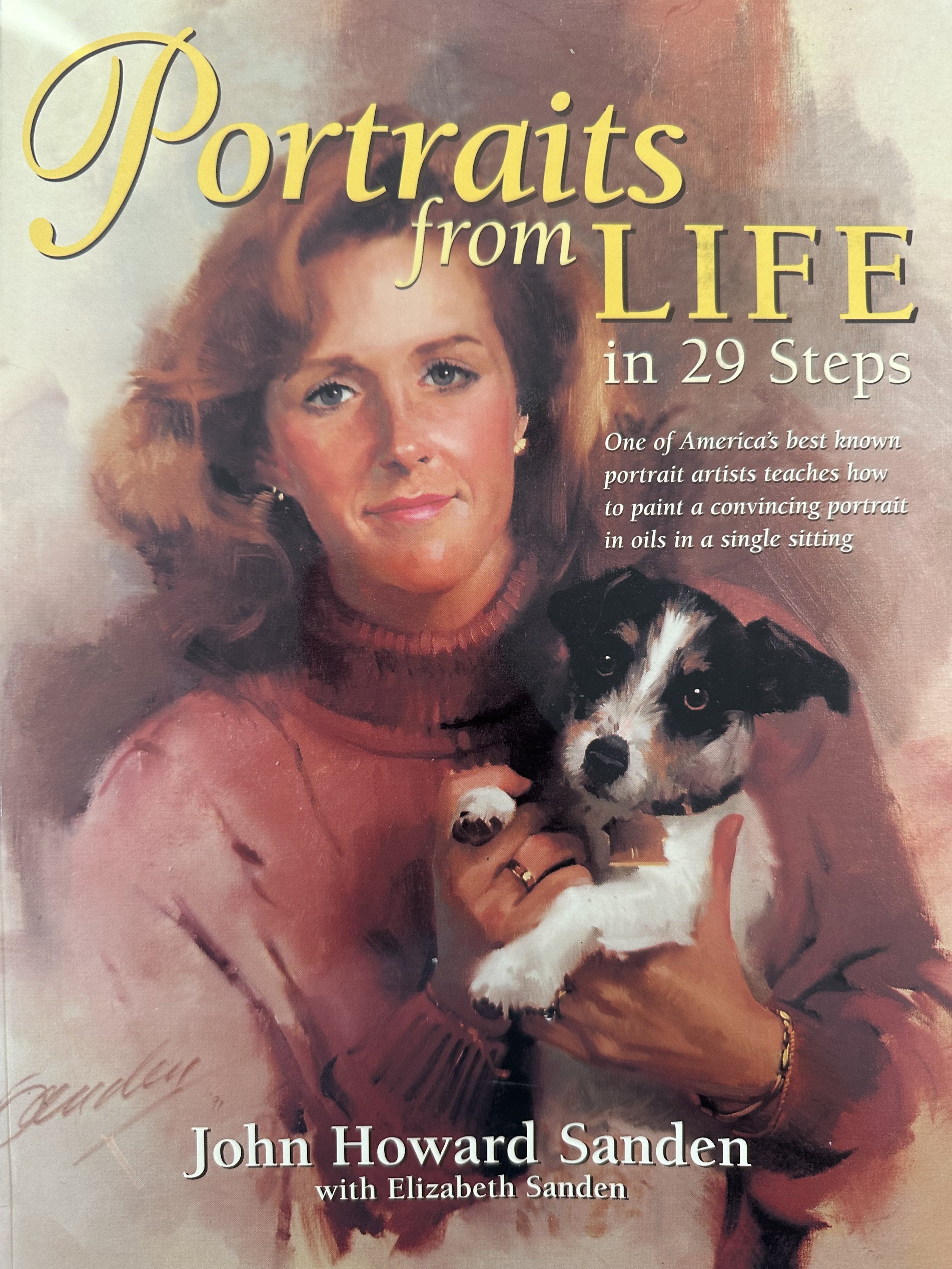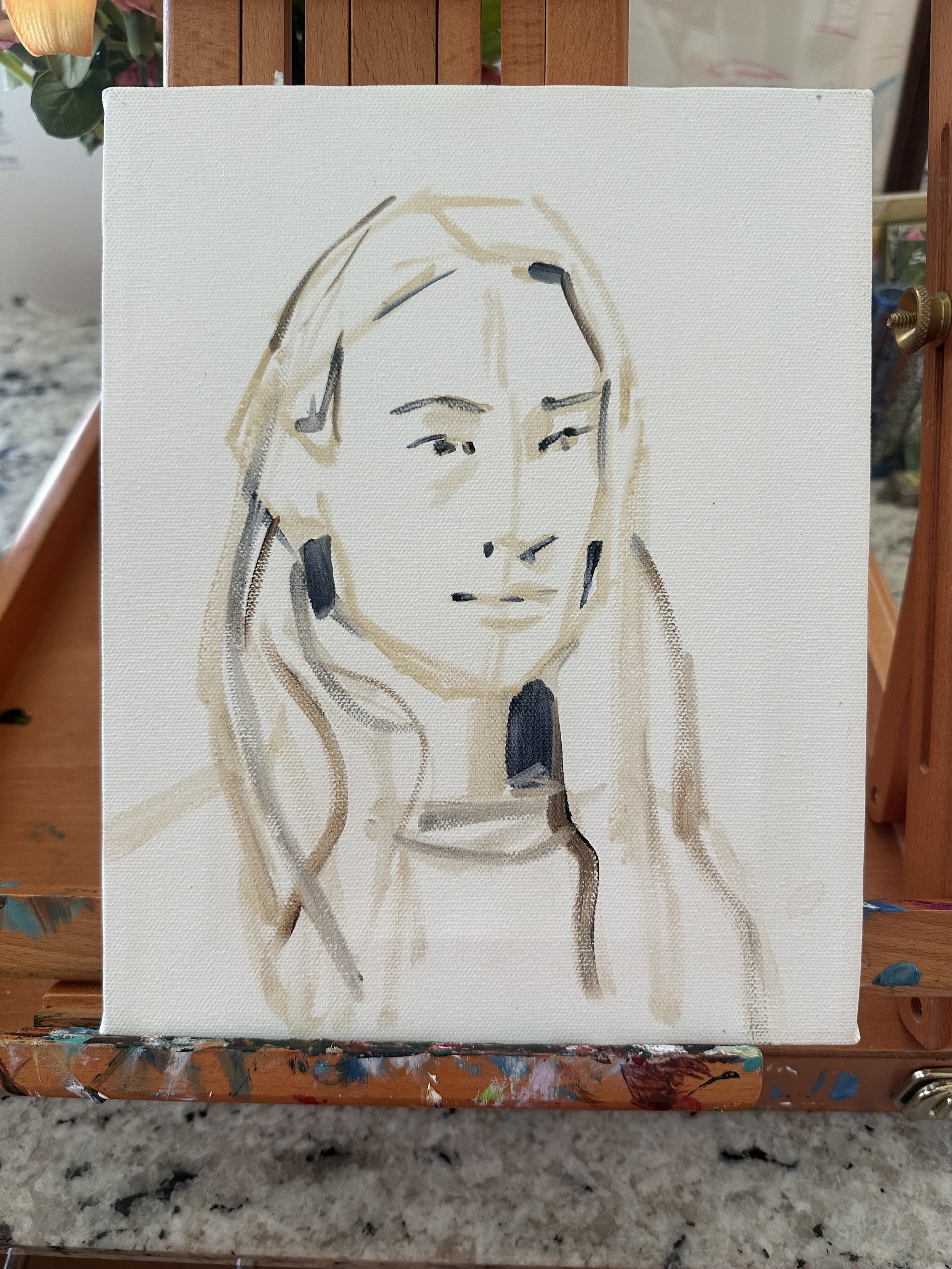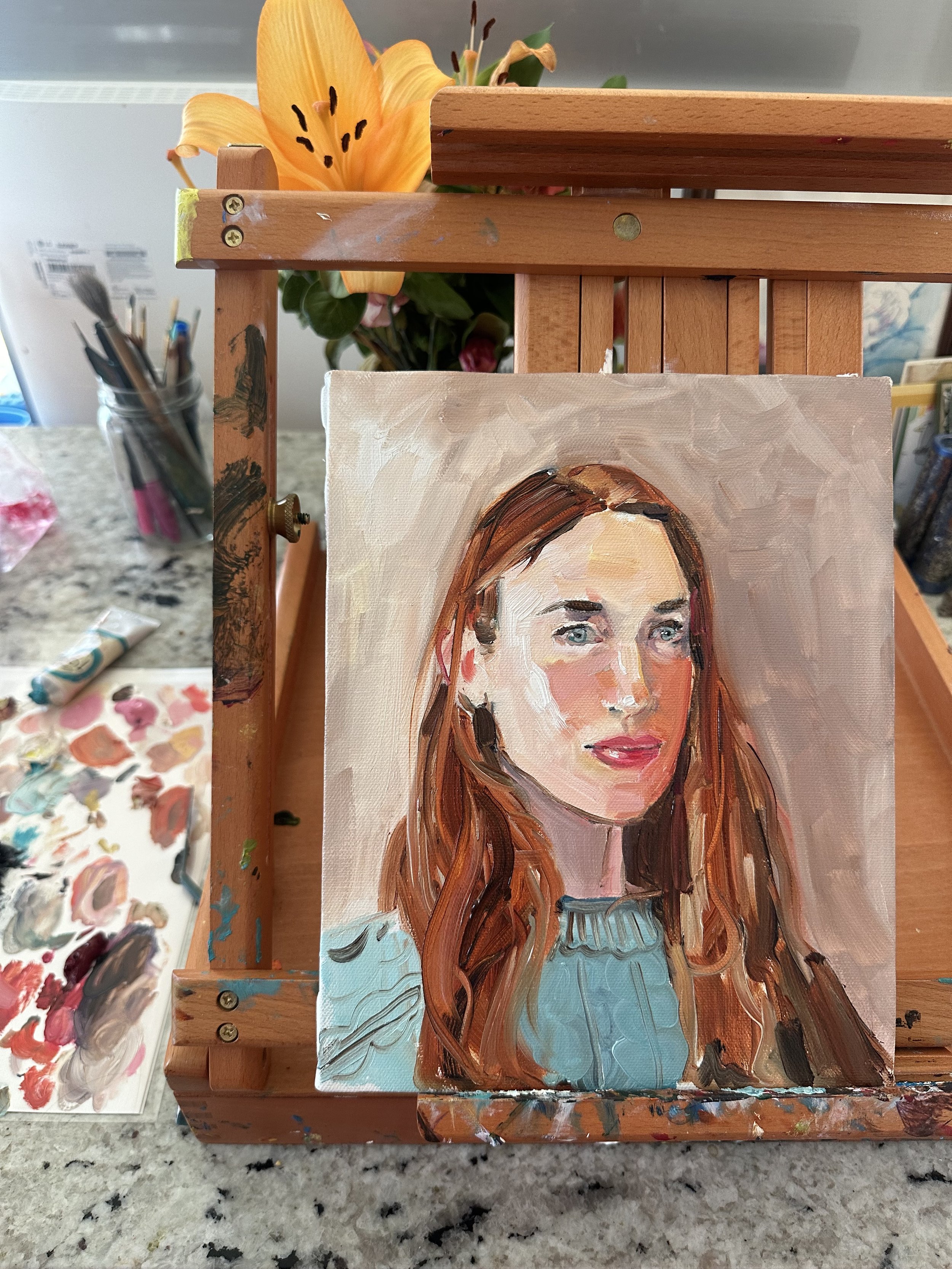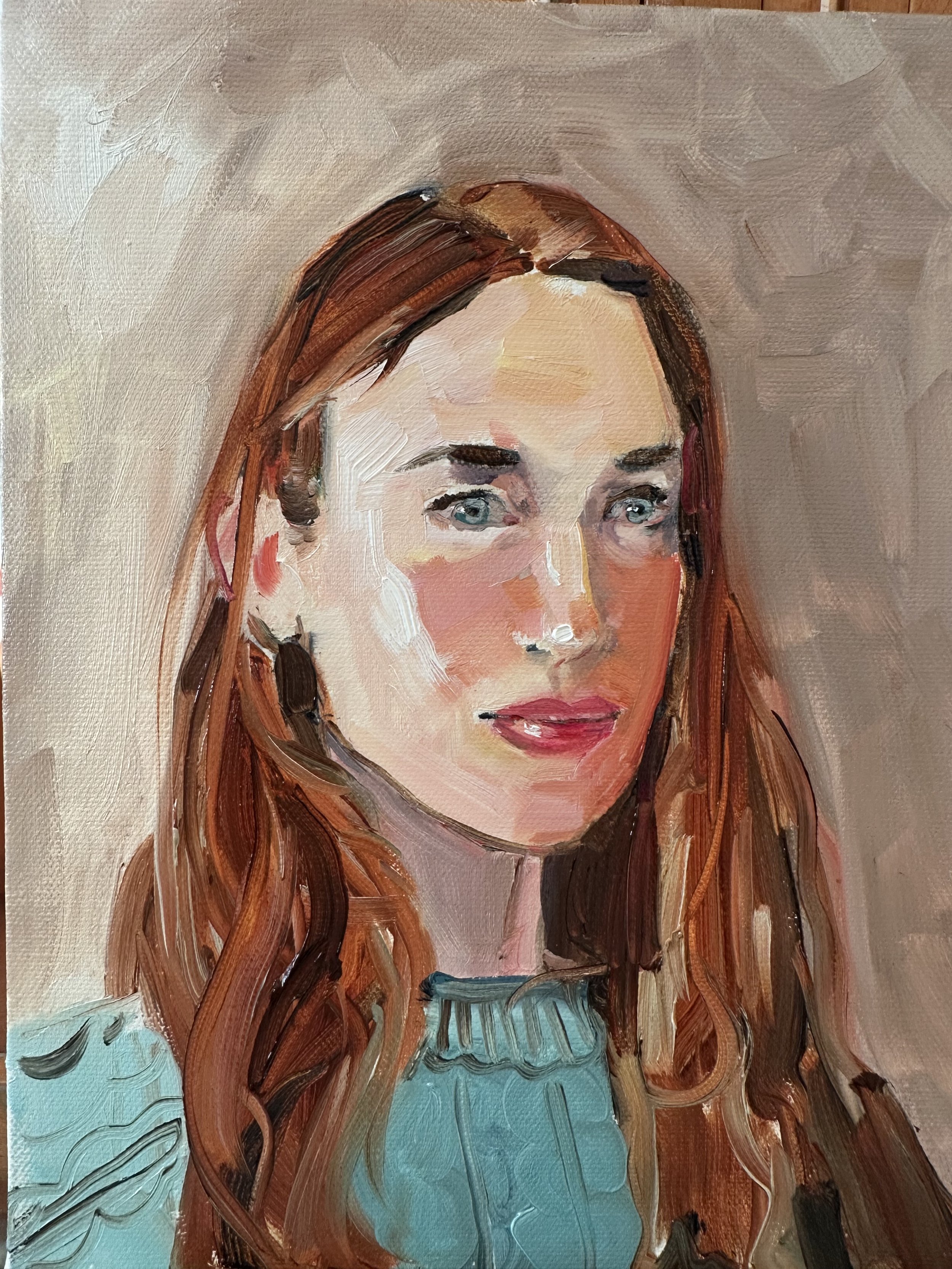I first happened across John Howard Sanden’s work and writing in the book “Painting the Head in Oil” which I found at Art Parts in Boulder. I flipped through the book and I liked the images and paintings, I thought they were really good. I also noticed that there were paint smudges in the book, which meant to me that someone else had actually painted while using the book, or they had it open while painting.
So, when I saw yet another John Howard Sanden book about portraits, I had to get it.
I found it to be really funny that there are exactly 29 steps. I feel like Sanden isn’t lying to us by saying it’s as easy as 1-2-3 or even 10 steps. He also didn’t round up all the way to 30 steps. There are exactly 29 steps. Without spoiling the book or committing some copyright error, I won’t go into the exact 29 Steps too deeply. TLDR; the steps worked well for me and here is how.
The steps involve a basic sketch in a neutral tone of paint, and taking your time to get the sketch right. Areas like the top of the head, the sides of the entire head and hair, and where the chin ends, are marked off and divided in a neutral hue or beige. There’s a mapping of ‘landmarks’ and dark areas of the face. Then it seems to go into undertones, making vast areas of the face very dark, even for a light-toned white person, and then pulling out the mid tones and highlights or light areas at the end.
There’s also a specific order to how you work the areas of the face. I wouldn’t say starting at the top or bottom matters so much, but what Sanden has done is that he makes it so you only touch one part of the face once with one layer or tone. So you aren’t going back and forth between the forehead and cheeks six or seven times. You make one layer or pass at the forehead, cheeks, and chin, and then you make the second pass at the forehead, cheeks, and chin. The goal seems to be to reduce the number of times you could possibly be working with a single tone on a certain area. For the mission of finishing a painting in a couple hours, this works well.
Even though there are 29 steps, and that may sound like an high amount of steps, under this system, each part of the face is only going to be worked on a limited number of times. There’s also a useful ordering of laying down darks and lights, and when to do that. This reduces the chance of the painting being overworked, and the colors or hues being over mixed and dulled.
Sanden mentions pretty early in the book that making a full pencil sketch isn’t too useful, in his opinion, because it just gets covered anyways. I found this to be pretty true as I followed the 29 steps, which never involve a pencil or full under sketch. I’ve certainly made pencil sketches underneath my paintings before, and they either haven’t turned out as good as the 29 steps painting, or, the sketch got covered right away.
What I found interesting about the 29 steps is that the initial neutral lines and the mapping of ‘landmarks’ was the hardest part, or, it felt the most brain-intensive to me. Since I seemed to get those right, the rest of the painting didn’t feel like my mind was churning through as much. I wouldn’t say the painting was ‘easy’ after setting down the neutral lines, but I would say it was ‘straightforward’. Figuring out the rest of the painting was more linear after those first 6-10 steps.
I certainly have more work to do before I reach Sanden’s level (don’t a lot of us?) what I will say about this painting is I was really happy with it. I feel it captured the photo of me that I worked from in the best way. There’s something about painting too, painting as an enterprise, that has opportunity that photographs don’t have. Painting has the opportunity of showing hidden spirits. That’s what I think I got out of this painting and this exercise as a whole.
I ‘discovered’ John Howard Sanden’s work only this year, and I was sad to read that he passed away in 2022. John Howard Sanden is an interesting writer to read. He gets impatient with what seem to be painting trends that people are following at the time of his writing. I can only really guess at that, but that’s my guess. It’s very funny and entertaining to read. He also had or has his own proprietary set of paints. It can be a little bit of legwork to mix paints that match the paints in his set, but I will say it’s worth it. I’m sure the set is still available somewhere, maybe on eBay at this time. On John Howard Sanden’s website, the area to order the paint set mentions that the creation of the set is in a kind of flux. I can only imagine, with his relatively recent passing and such a huge legacy to manage, there must be a lot up in the air.
In the book there are a couple images of John Howard Sanden teaching and painting. He taught at the art student’s league and had a couple incredible home studios. It seems like he was at home with dozens of people watching him paint, which I find impressive. He painted random people who would volunteer for his workshops, and he would also paint people like bishops and United States Presidents. I found this to be even more impressive, because he captures everyone from every walk of life so well.
I think a book like this would be useful for someone who wants to work specifically on portraits and work in-depth on it. There are tons of great videos, instagram reels, etc, out today with simple tutorials that focus on one area of the face. There’s so many timelapse videos where it’s so wonderful to be impressed with the artist’s skill and the outcome of their work, but we never hear why they artist is doing what they are doing, or what they are thinking while they are painting. This book contains all of that: the why, the how, and the what. He has an answer for every expression and skin tone. Of all things, the dog on the front cover was also a signal to me - he seems to have captured not just the woman in the portrait, but the dog’s expression is also so full of life.
My next step in oil portrature is to keep working on the 29 steps. I’ve asked a couple friends if they would volunteer model for me. I may also try to get my hands on some of the painting DVDs that Sanden offered. These, too, seem to be scattered across eBay and somewhat available on Amazon. To be frank with you, readers, I don’t even own a DVD player right now, but I want to see what more I can get from this person’s knowledge. I’ll report back when I find out more.
Thanks for reading and catch you soon!





